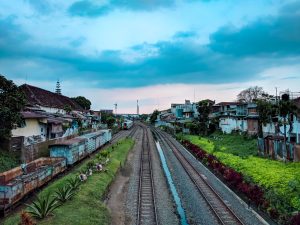PT Kereta Api Indonesia (Indonesian Railways Company, or KAI) is the country’s state-owned rail operator and they have been, if you will excuse the pun, on something of a roll lately. Like any company in the travel industry, KAI has been battered by the pandemic over the last two years, but it remains one of the country’s more competently run state-owned companies. And its trajectory over the last decade or so tells an interesting story about the ways in which the state and the economy intersect in Indonesia.
About a decade ago KAI was in a bit of a rut. As the operator of a national rail network spanning several thousand kilometers, it was sitting on a large amount of aging fixed assets including infrastructure, rolling stock, and land, mainly in Java and Sumatra. But revenue was flat and these assets weren’t being optimized with an eye toward growth. At that time, it was still somewhat difficult for certain Indonesian SOEs to get financing as the memory of the Asian Financial Crisis made lenders wary about extending them credit. Decentralization was also causing coordination breakdowns between national and local-level stakeholders which hamstrung big-ticket infrastructure projects.
Despite these financial and operational constraints, passenger traffic was growing rapidly. In 2013, KAI saw 221.7 million passengers across all of its lines. Just six years later, in 2019, that number was 429.2 million. And in President Susilo Bambang Yudhoyono’s second term, KAI became an important player in a larger national vision of using state-owned companies to upgrade the country’s lagging transportation infrastructure (a vision which Jokowi has built on with considerable success). It invested in an electronic ticketing system; in a system of airport rail links in Medan, Jakarta, Solo, and Yogyakarta; began operating the Palembang Light Rail Transit system; and became an equity partner in the country’s first high-speed rail line linking Bandung and Jakarta, which is currently under construction.
KAI will also become the operator of the Greater Jakarta LRT which is currently under construction and through its subsidiary, KAI Commuter, it operates the commuter rail network serving the Jakarta metropolitan area. That commuter network alone had 380 million riders in 2019, and with the government focusing in earnest on improving livability in major urban centers, we should expect KAI’s role in urban rail to expand in the coming years.
They have also stepped up investment in freight transport capabilities, with total freight volume increasing from 24.7 million tons in 2013 to 47.6 million in 2019. The majority of this is coal being moved around in South Sumatra, and the steady investment in this area is one reason why I think the recent export ban on coal is less about coal supply and logistics, and more about the state sending a message to private companies and the market about who is really in charge. But that’s a discussion for another time.
The breakneck pace of this growth shows up clearly in KAI’s balance sheet and income statement. In 2011, the company had total assets of 6 trillion rupiah. By 2019, that had jumped up to 45 trillion. Over the same time period, revenue quadrupled from 6 trillion to more than 26 trillion. These efforts have been financed by a combination of state capital injections, loans, and bonds. In 2017, KAI successfully floated a 2 trillion rupiah bond and another one in 2019. In general, this suggests less trepidation amongst investors and lenders about extending credit to Indonesian SOEs these days, or at least to this one.
Despite the progress detailed above, KAI rarely pays much of a dividend to the state, which is its sole shareholder (in a good year it might pay the equivalent of a few million dollars). Instead, KAI makes a modest profit and reinvests almost all of it back into operations and capital improvements. Some people might find this objectionable, especially since the state injects capital directly into KAI, subsidizes some ticket prices and pushes state-owned banks to extend short-term working capital loans. What’s the benefit for the state if they aren’t making their money back?
The benefit is that Indonesia has a more functional railway network that is not actively losing money, can maintain fairly reasonable prices and reinvests earnings into new projects like improved urban rail networks or airport links. When we look at shared public goods like railways, municipal water, electricity and the like, the question is not whether privatization is somehow intrinsically better than state ownership. The question is what model works best for a particular situation in a particular place. The success KAI has had in driving Indonesia’s newfound railway renaissance shows that, in this case, a state-owned company has been a reasonably good fit.













